Chelsea Yates
September 18, 2017
For researchers in the UW’s UbiComp Lab, a smartphone offers much more than access to email, Facebook and Pokémon Go: It has the power to detect disease and, ultimately, save lives.
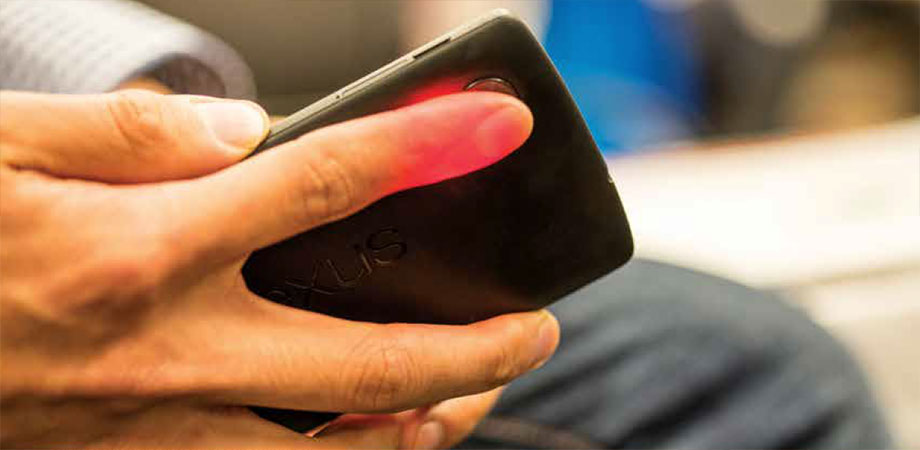
HemaApp measures hemoglobin in the blood using a smartphone’s camera.
The growing availability of smartphones with increasingly sophisticated sensors has opened new avenues for exploration and innovation — avenues that will lead to healthier communities in even the poorest regions of the globe. With partners across campus and worldwide, UbiComp researchers are developing and deploying mobile technologies that will transform health care as we know it.
Shwetak Patel, Washington Research Foundation Endowed Professor of Computer Science & Engineering and Electrical Engineering, leads the UbiComp Lab. The College of Engineering recently talked with him about this emerging body of work.
- CoE: Your lab’s early work focused on monitoring systems in the home. Why has your team’s research expanded into mobile health?
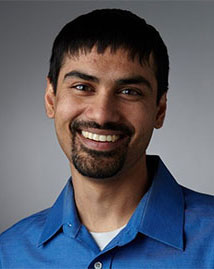 SP: In our previous sustainability research, we used the infrastructure of the home. Instead of creating sensors, we asked how we could use existing elements — electrical wiring, water systems and so on — to track power and water usage.
SP: In our previous sustainability research, we used the infrastructure of the home. Instead of creating sensors, we asked how we could use existing elements — electrical wiring, water systems and so on — to track power and water usage.We’re now applying the same concept to smartphones by leveraging the sensory capabilities of phones to provide on-thego physiological sensing. Smartphones provide opportunities for remote monitoring and self-management of disease — both doctors and patients can track patients’ health through data collection and assessment. Additionally, we can enable care in places where it hasn’t been widely accessible before, particularly in low-resource communities.
- CoE: Why mobile phones?
SP: Mobile phones are ubiquitous — people take their phones everywhere, and they like to use them. Plus, these devices have ridiculous capabilities in terms of computation, networking and sensing. We want to introduce easy-to-use health management applications so that people can monitor their health via their phones. No extra devices or attachments needed. No special trips to drug stores or doctors’ offices.
- CoE: How available are smartphones across the globe?
SP: Smartphone communication is quite prevalent worldwide, and it continues to grow. People don’t always have the latest and best devices, and we are mindful of this when developing our apps. Phones don’t have to be on the cutting-edge to run our apps; they just need to be "smart enough."
And even if individuals in remote or low-resource areas don’t have mobile phones, that’s okay: A health care provider’s phone can host multiple apps to screen many people for a number of diseases.
- CoE: What’s the biggest challenge facing your lab’s research?
- SP: Our work is inherently integrative, and the U.S. health industry is not. It’s a model built around one-on-one care with many specialized fields. The tools we’re developing cut through many silos, and they allow for remote care and cloud-based data sharing. As remote mobile health emerges as its own field, the challenge — for all of us — will be figuring out how to make it work within the health care industry at large.
- CoE: You’re currently pursuing FDA clearance for two mobile health apps, BiliCam and SpiroSmart. What’s it been like to be involved in this process as it evolves to keep pace with technological advancements?
- SP: BiliCam and SpiroSmart are the first examples of projects for which the UW funded the FDA approval process. Universities usually aren’t involved in pursuing FDA clearance, but thanks to CoMotion, the Wallace H. Coulter Foundation and the Life Sciences Discovery Fund, I’ve been able to lead it for our team. We haven’t completed the process yet, and although it was challenging at first, it’s been incredibly beneficial to go through it as an academic. It has certainly made our research better. With insight into the process, we can better inform our study designs, and we can help pave the way for future research.
Learn more: UbiComp Lab
Five smartphone apps with the power to transform global health
UbiComp researchers are developing and testing several low-cost, easy-to-use, non-invasive mobile health apps, including:
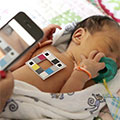 BiliCam:
An alternative for detecting newborn jaundice — which can lead to brain damage and death — using a smartphone’s camera. Instead of looking for “yellowness” in the skin, the camera and flash together measure the amount of bilirubin in the blood by examining wavelengths of light absorbed by the skin. In the U.S., this app will enable parents and general practitioners to screen before involving a specialist. In many parts of the world, midwives and traveling nurses more commonly deliver babies. Currently they have no screening tool for jaundice; this app will provide them with one.
BiliCam:
An alternative for detecting newborn jaundice — which can lead to brain damage and death — using a smartphone’s camera. Instead of looking for “yellowness” in the skin, the camera and flash together measure the amount of bilirubin in the blood by examining wavelengths of light absorbed by the skin. In the U.S., this app will enable parents and general practitioners to screen before involving a specialist. In many parts of the world, midwives and traveling nurses more commonly deliver babies. Currently they have no screening tool for jaundice; this app will provide them with one.
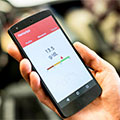 HemaApp: A means of measuring hemoglobin in the blood using a smartphone's camera. Many health conditions — such as anemia, malnutrition and pulmonary illnesses — impact hemoglobin levels. This app is not only a disease screening tool but it can also help medical professionals assess the nutritional well-being of individuals and communities. Current monitoring requires blood samples or expensive equipment. By eliminating the need for blood draws, HemaApp alleviates concerns about sample contamination or infection.
HemaApp: A means of measuring hemoglobin in the blood using a smartphone's camera. Many health conditions — such as anemia, malnutrition and pulmonary illnesses — impact hemoglobin levels. This app is not only a disease screening tool but it can also help medical professionals assess the nutritional well-being of individuals and communities. Current monitoring requires blood samples or expensive equipment. By eliminating the need for blood draws, HemaApp alleviates concerns about sample contamination or infection.
SpiroSmart/SpiroCall:
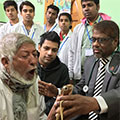 Hundreds of millions of people worldwide suffer from chronic respiratory diseases, and millions die each year. SpiroSmart measures lung function by having the patient blow into a phone’s microphone, replacing an expensive dedicated spirometer for diagnosing and managing asthma, cystic fibrosis and other pulmonary diseases. SpiroCall is a related project that is particularly useful in low-resource settings where smartphone access is limited. It turns any phone into a spirometer through a toll-free calling service.
Hundreds of millions of people worldwide suffer from chronic respiratory diseases, and millions die each year. SpiroSmart measures lung function by having the patient blow into a phone’s microphone, replacing an expensive dedicated spirometer for diagnosing and managing asthma, cystic fibrosis and other pulmonary diseases. SpiroCall is a related project that is particularly useful in low-resource settings where smartphone access is limited. It turns any phone into a spirometer through a toll-free calling service.
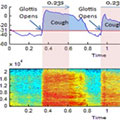 CoughSense: Coughing is the number one symptom individuals report when experiencing an illness. Currently, to assess coughing, patients are asked to self-monitor or wear specialized equipment. CoughSense uses the phone’s microphone to monitor cough frequency for a single person or, when networked, to track trends across an entire population. In this way, it will be an important tool in monitoring the spread of diseases such as influenza or tuberculosis through pattern recognition in high-density areas.
CoughSense: Coughing is the number one symptom individuals report when experiencing an illness. Currently, to assess coughing, patients are asked to self-monitor or wear specialized equipment. CoughSense uses the phone’s microphone to monitor cough frequency for a single person or, when networked, to track trends across an entire population. In this way, it will be an important tool in monitoring the spread of diseases such as influenza or tuberculosis through pattern recognition in high-density areas.
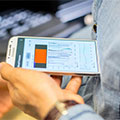 BPSense: Measures blood pressure by Pulse Transit Time (PTT), the time taken by a pressure pulse to travel through the arterial tree. One method uses a phone's dual camera to measure a person’s pulse at his/her fingertip and ear simultaneously. A second method uses a phone’s microphone and camera to listen to the patient's heart beat and measure pulse at his/her fingertip. In addition to tracking, BPSense can also remind individuals to check their blood pressure at various times throughout the day.
BPSense: Measures blood pressure by Pulse Transit Time (PTT), the time taken by a pressure pulse to travel through the arterial tree. One method uses a phone's dual camera to measure a person’s pulse at his/her fingertip and ear simultaneously. A second method uses a phone’s microphone and camera to listen to the patient's heart beat and measure pulse at his/her fingertip. In addition to tracking, BPSense can also remind individuals to check their blood pressure at various times throughout the day.
Images courtesy of the UbiComp Lab, University of Washington.